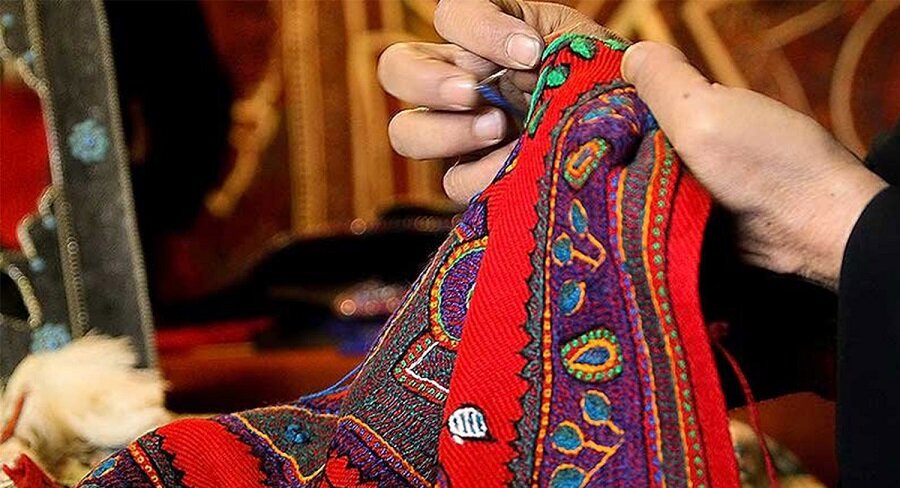Needlework export could generate revenue more than oil, expert says

TEHRAN – The currency earnings of needlework could be greater than those of oil, a handicrafts expert has said.
If Iranian needlework is taken into consideration, needlework could generate more currency earnings than oil, IRNA quoted Maryam Sammak as saying on Sunday.
With the help of exhibitions held throughout the year in different countries, it is possible to have a high share in global markets in this field, she added.
Depending on the needs of the countries, artists should be supported and their works exposed to sale in these exhibitions, she noted.
Europeans prefer delicate works such as silk embroidery and net embroidery, while Arab countries prefer glitzy artworks, therefore, the works should be displayed according to the needs of the country and region, she mentioned.
Needlework (Souzan-douzi in Persian) is a very common occupation among people of some Iranian provinces. It is the art of drawing images on plain fabrics by sewing delicate stitches using a needle and colorful yarns. They are mainly used to embellish women’s clothes; however, such works are applied to decorate bracelets, necklaces, bags, and scarves.
The value of Iran’s handicrafts exports stood at $400 million during the first ten months of the current Iranian calendar year 1401 (Mar. 21, 2022– Jan. 20, 2023).
The Islamic Republic exported some $320 million worth of handicrafts during the past Iranian year (1400).
According to the Ministry of Cultural Heritage, Tourism and Handicrafts, Iran has the most cities and towns registered with the World Crafts Council (WCC), followed by China with seven, Chile with four, and India with three designated ones.
The WCC-Asia-Pacific Region designated Shiraz, Malayer, Zanjan, and the village of Qasemabad in January 2020, bringing the total number of craft cities and towns in Iran from 10 to 14. Shiraz has been dubbed “the world city of [various] handicrafts.”
Malayer became a center for woodcarving and carved wood furniture on a global scale. The designation “world city of filigree” was given to Zanjan. The village of Qasemabad, which is renowned throughout the country for its traditional costumes, was also promoted to a major handicrafts center on an international scale.
Iraq, Afghanistan, Germany, the United States, and the coastal states of the Persian Gulf are among the countries that traditionally import ceramics, porcelain, hand-woven clothing, personal jewelry, and semi-precious stones from Iran.
ABU/AM

Leave a Comment